Exploring the Delhi Megalopolis by Bus and Metro
![]()
Soon after settling in our guest house in Malviya Nagar (MV), we were ready to explore the great megalopolis of Delhi. But first, some mobility research was called for. We learned that Delhi's transport system includes bus service provided by the Delhi Transport Corporation (DTC) and the Delhi Metro provided by Delhi Metro Rail Corporation (DMRC). Ubiquitous auto rickshaws (tut-tuts) offered rides for point to point travel at a higher cost and taxis were available for splurges.
For us, as residents of South Delhi, the buses would provide the only transit option until 2010 when the new extension of the Metro Yellow Line will be completed. On MV Market Street, we had seen buses #520 and #503 pass by, both with clearly marked route numbers, but with destinations only in Hindi, we weren't sure where they went. The DTC website offered helpful information about the various routes and fares, and we learned that #520 would take us north to the south end of the Metro. We decided to try it out.
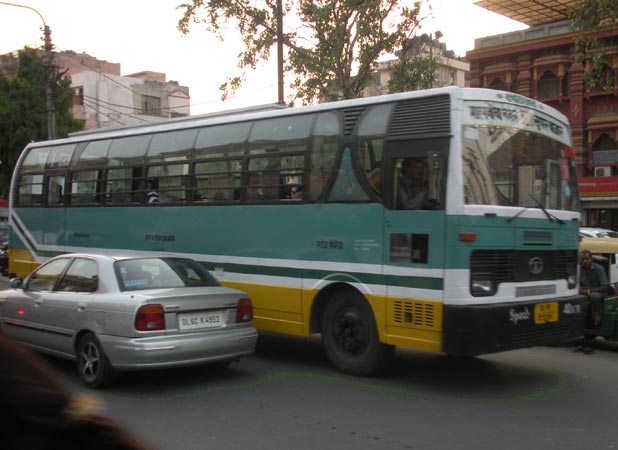
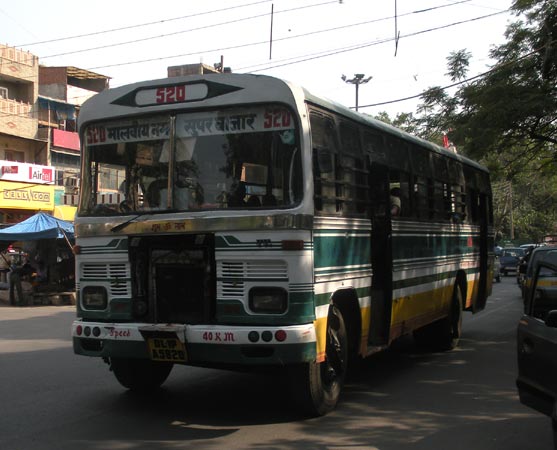
Onboard, a conductor asked our destination (Central Secretariat) and we paid him our Rs 7 each (US$ 0.14) and were on our way. Delhi buses all run on CNG, the engines and brakes seemed to be in good repair but there were no shocks so the ride was rough. The seats were well worn but reasonably clean; sliding windows, always open, provided ventilation. There were often flower garlands and pictures of gods or goddesses to reassure passengers. Each bus had 6 or 8 seats reserved for 'Ladies' and the conductors would regularly ask male passengers to give up these seats to women (how enlightened). Looking around at the friendly smiles and interested glances from the brown faces of our fellow passengers, we realized that foreigners don't ride Delhi buses!
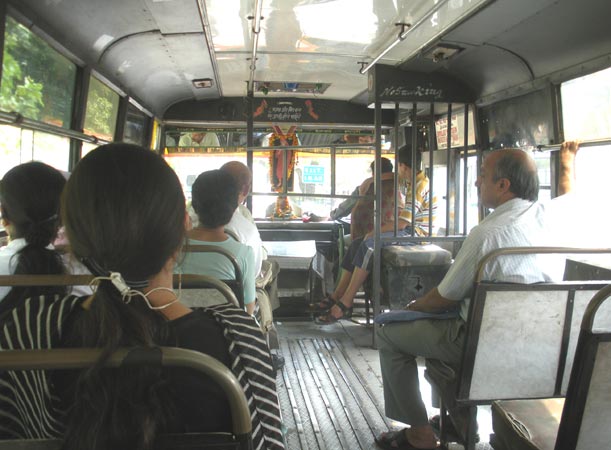
At each stop, the conductor shouted out the next stops, and signaled by taps or thumps on the side of the bus to let the driver know when to start up. We rode about nine kilometers to Central Secretariat, the closest Metro Station on the Yellow Line. All along the way, we passed Metro construction and realized that change was on the way.
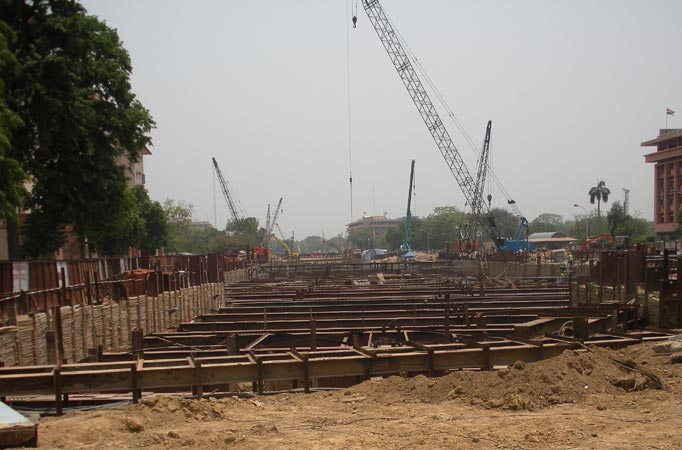
At our destination, we descended into the cool depths of the station, stopping at the ticket counter where we bought Smart Cards. After a quick security check, we were on our way.
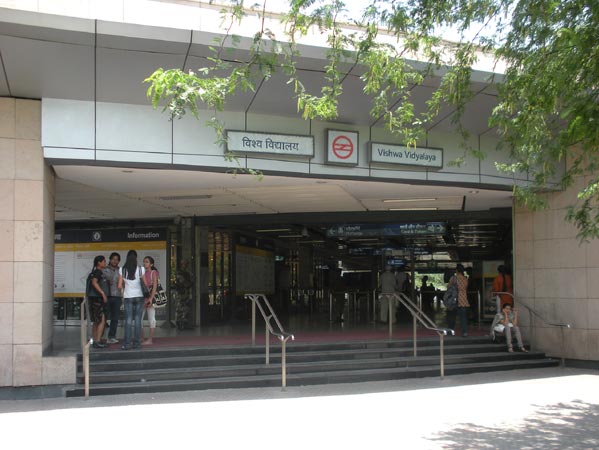
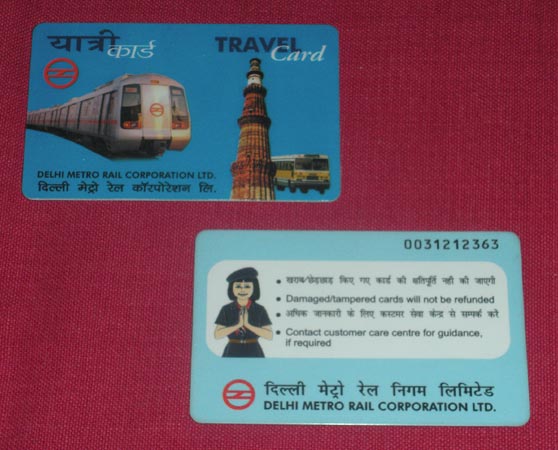
Boarding the train, we found seats and enjoyed a smooth, quiet, cool ride, at first underground and later elevated. We traveled to the far north side of Delhi through a vast panorama of rather bleak and gray two to four story residential blocks. Riding back a few stops to the Delhi University area, we discovered the small connector buses that transport riders to and from the surrounding neighborhoods as well as bus stops for the Delhi Transport Corporation (DTC) buses. Park'n'Ride spaces for bicycles were available, too.
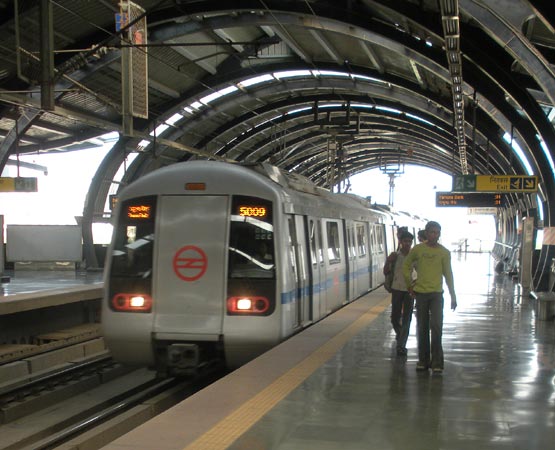

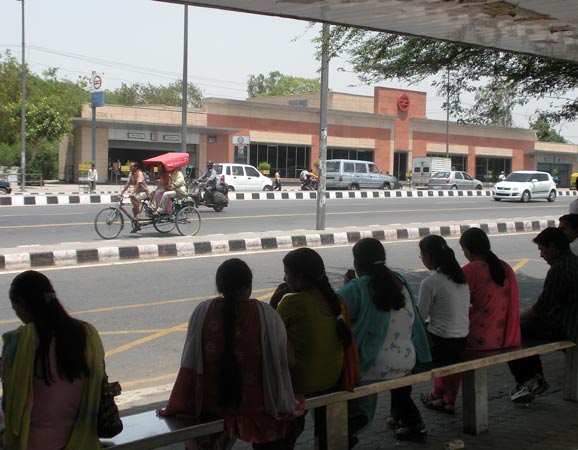
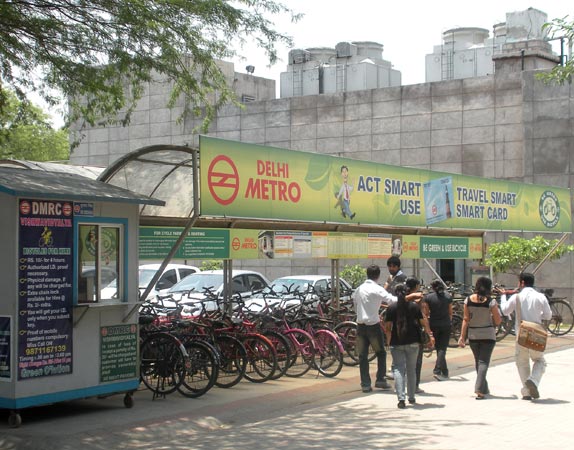
Returning to Connaught Place, we changed to the Blue Line to ride to the Metro's eastern end, just across the Yamuna River. From the train, the river looked serene and the floodplain agriculture offered lush, rural vistas. But the roofs of slums and stacks of industrial plants reminded us the Yamuna is a threatened urban river. A specially designed bridge spaned the Indian Railway tracks.
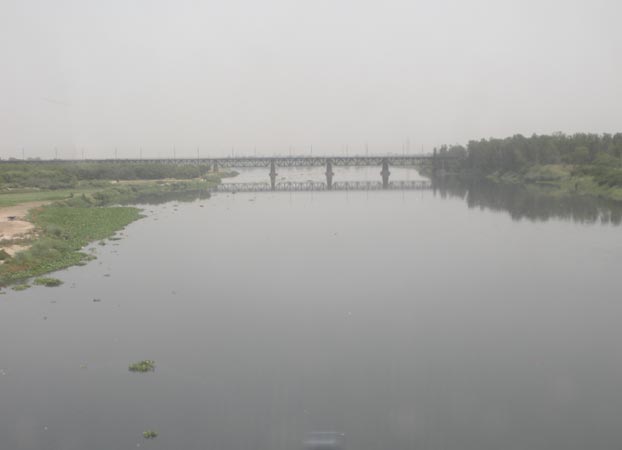
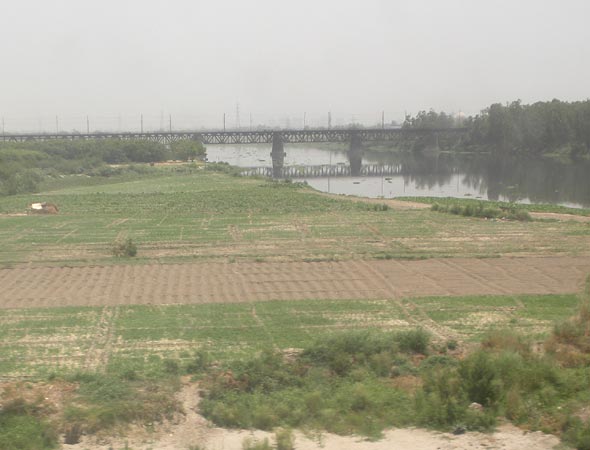
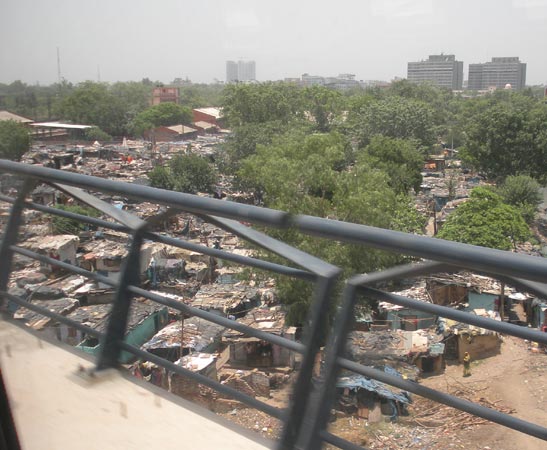
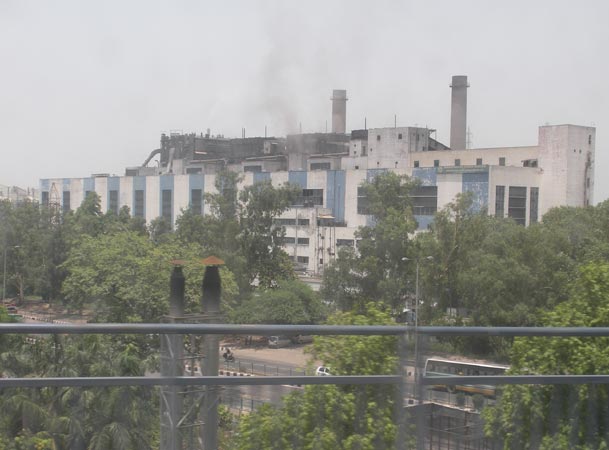
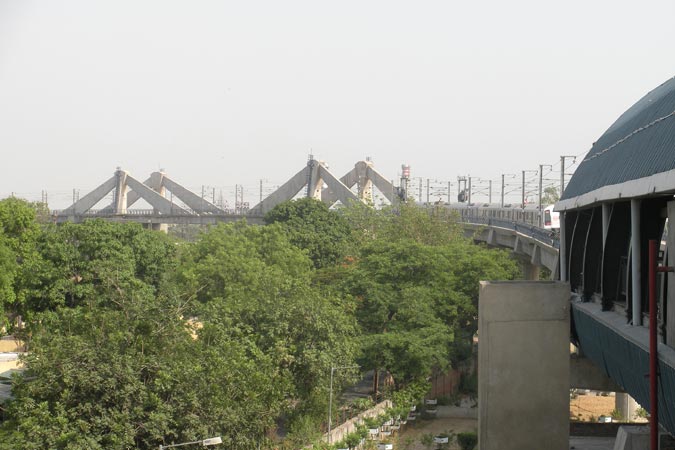
Delhi-ites are justly proud of their Metro. The Delhi Metro Rail Corporation (DMRC) began construction in October 1998 and just over four years later, December 2002, the first section was opened to the public. By 2005 the system had expanded to nearly 60 kilometers, providing clean, cool comfortable rides to thousands of passengers. At the moment, construction is surging forward with extension of lines to the airport, across the Yamuna to Noida, and south through Malviya Nagar and on to the fast growing city of Gurgaon. By 2010, the system will be over 190 kilometers!
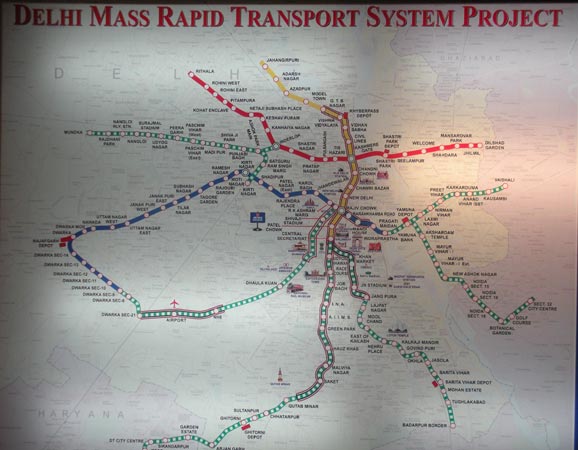
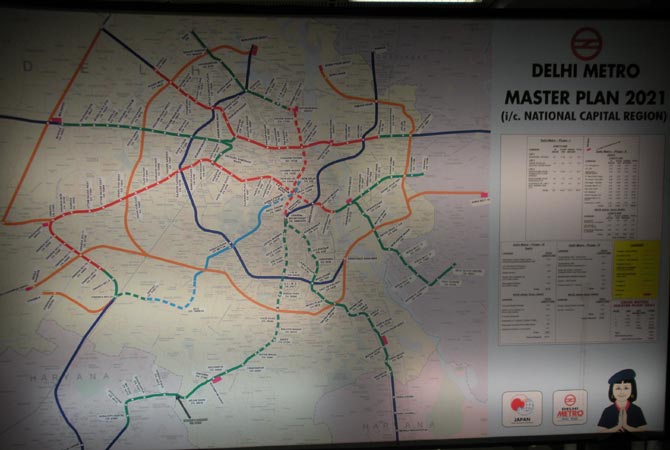
The Delhi Metro success story is due to the 'can do' determination and project management skills of DMRC boss, E. Sreedharan. From his office in Metro Bhavan, he directs the operations and imposes his exacting work ethic on the whole organization. Under his guidance, the metro has the lowest cost per kilometer of any system and is already making operational profits! Astounding!
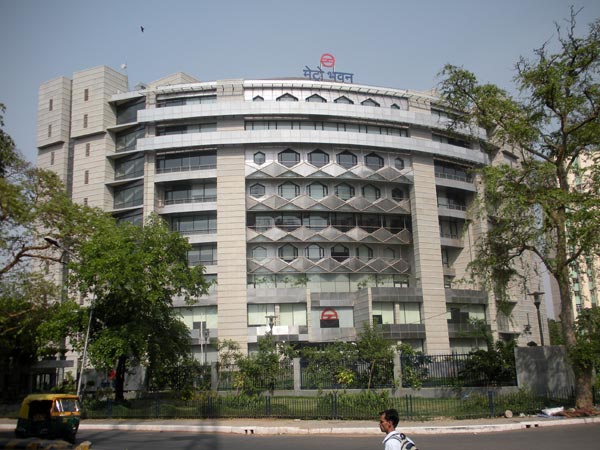
But the Metro will not reach every corner and neighborhood of this vast city so the DTC and DMRC are looking for other ways to improve mobility. From many of the Metro Stations, more Connector buses will offer services to nearby neighborhoods. On major thoroughfares, bus rapid transit routes in dedicated lanes are being established, with modern stations and served by shiny new buses. We boarded one of these buses for a ride and found them to be more comfortable and quicker than their older lumbering bus cousins. We have read that thousands of these new buses are on order for delivery over the next few years.

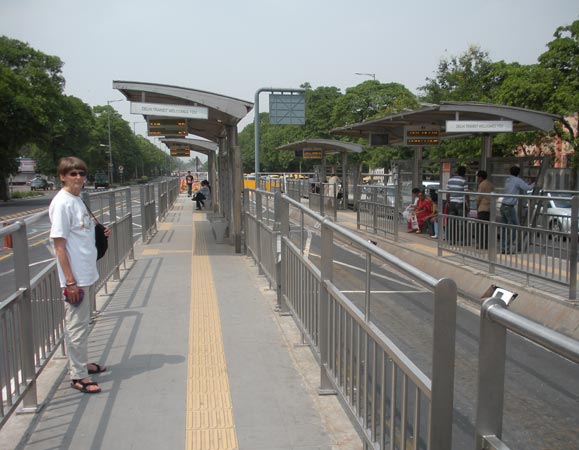
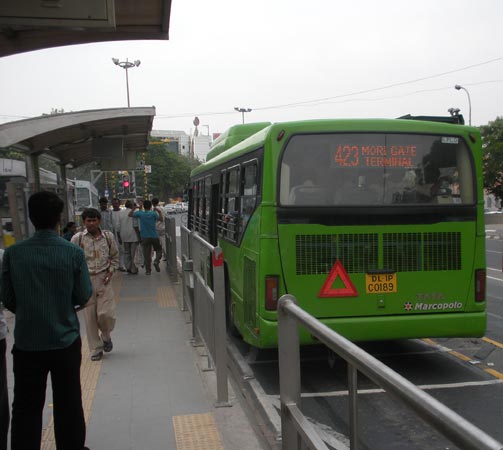
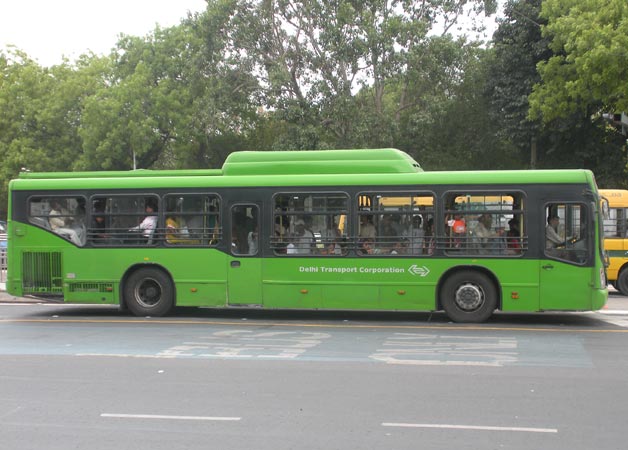
As these improvements are implemented, more people will have better mobility choices. Will people choose transit instead of a car? We sure hope so!
Click here to return to Our Revisiting India - 2009 page
![]()